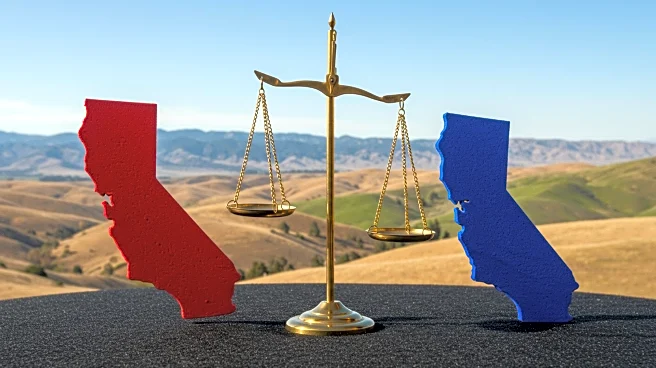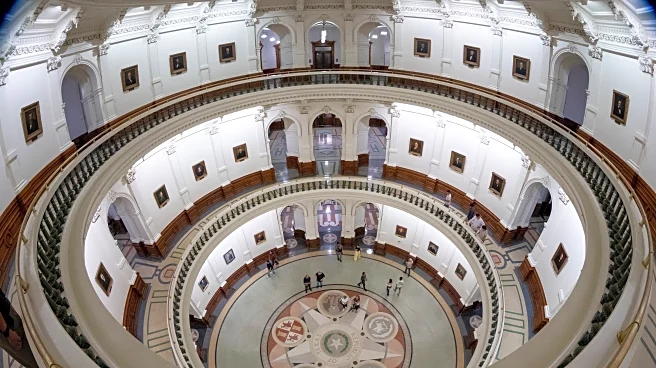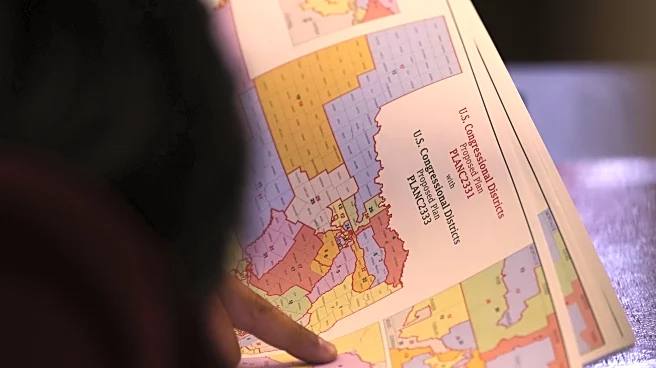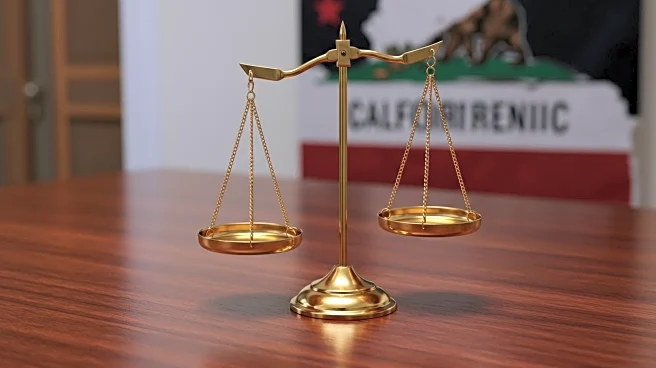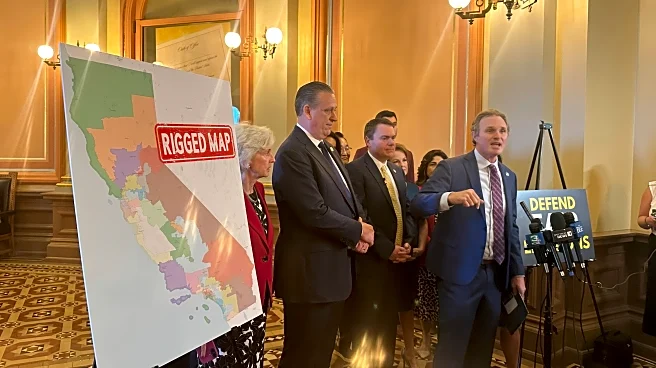What is the story about?
What's Happening?
A recent survey conducted by UC Berkeley's Institute of Governmental Studies reveals that 48% of California voters approve of the proposed redistricting map, while 32% disapprove and 20% remain undecided. The redistricting effort aims to redraw electoral district boundaries, a process that occurs every ten years to reflect population changes. The survey highlights the divided opinions among voters regarding the fairness and impact of the new district lines. The redistricting proposal has sparked debates over potential political advantages and the representation of diverse communities within the state.
Why It's Important?
Redistricting plays a crucial role in shaping political landscapes by determining the boundaries of electoral districts. The approval or disapproval of the proposed map can significantly impact political representation and power dynamics in California. Supporters argue that the new map ensures fair representation, while opponents fear it may favor certain political parties or dilute the influence of minority communities. The outcome of this redistricting process could influence future elections, policy decisions, and the balance of power within the state legislature.
What's Next?
As the redistricting proposal moves forward, it is likely to face further scrutiny and potential legal challenges. Stakeholders, including political parties, advocacy groups, and community organizations, may continue to voice their opinions and push for adjustments to the map. The final decision on the redistricting plan will ultimately rest with the state's redistricting commission, which will consider public feedback and legal requirements before finalizing the new district boundaries.
AI Generated Content
Do you find this article useful?



